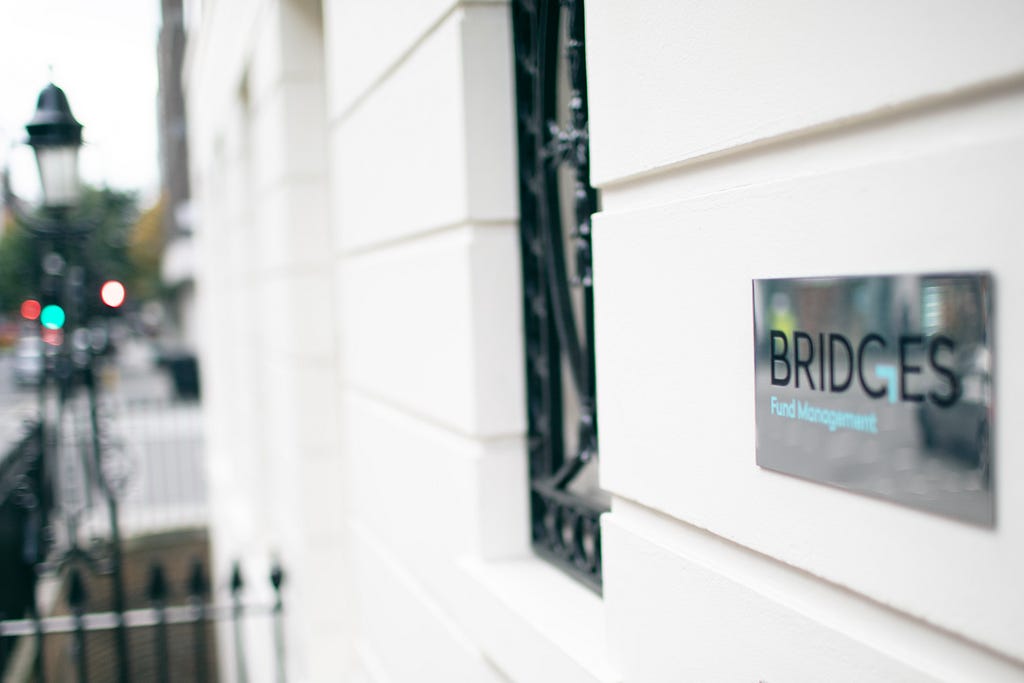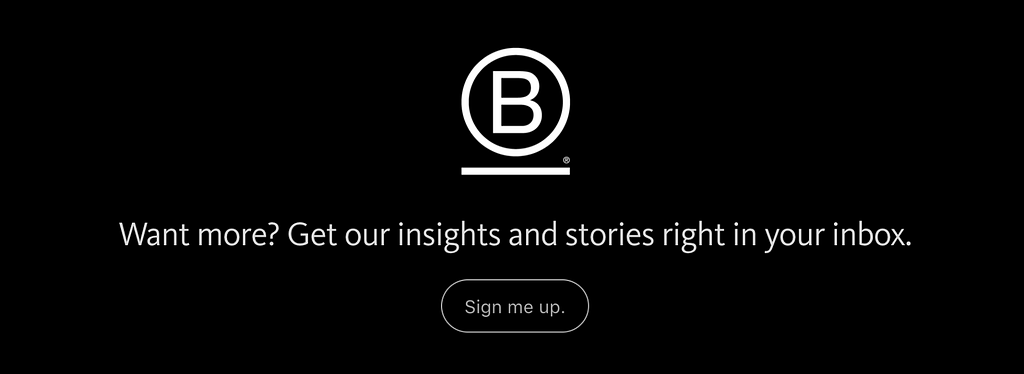Bridges Fund Management Demonstrates the Value of Multi-Stakeholder Approach and Builds the B Corp Community

For the more than 3,300 companies around the world that are Certified B Corporations, the B Impact Assessment is an online tool that helps them gain certification, measure their effect on people and planet, and target areas of operation for continual improvement.
For Bridges Fund Management, a London-based fund manager founded in 2002 and a B Corp since 2015, the B Impact Assessment (BIA) also is part of its evaluation process for potential investments. By incorporating the BIA into its everyday business practices, Bridges demonstrates how environmentally and socially conscious companies can build a foundation for stronger long-term financial performance — and Bridges also encourages those companies to consider pursuing B Corp certification.
While the investment world is historically known for its focus on maximizing profits for the benefit of shareholders, Bridges and others in the industry are broadening that view. This investment industry commitment to a larger group of stakeholders has gained new traction in the mainstream thanks to high-profile advocates like Larry Fink of BlackRock, who in 2018 first included a call that investors consider on the importance of environmental, social, and governance (ESG) measurement and accountability to mitigate long-term risk factors for investment firms.
In his 2020 letter to shareholders, Fink reiterated that call:
“As I have written in past letters, a company cannot achieve long-term profits without embracing purpose and considering the needs of a broad range of stakeholders. A pharmaceutical company that hikes prices ruthlessly, a mining company that shortchanges safety, a bank that fails to respect its clients — these companies may maximize returns in the short term. But, as we have seen again and again, these actions that damage society will catch up with a company and destroy shareholder value. By contrast, a strong sense of purpose and a commitment to stakeholders helps a company connect more deeply to its customers and adjust to the changing demands of society. Ultimately, purpose is the engine of long-term profitability.”
Fink’s letter came to mind when I spoke with Anthony Ross, a partner at Bridges who until recently led its sustainable growth and social sector funds, during research for my forthcoming book, Better Business: How the B Corp Movement is Remaking Capitalism. In my conversations for the book with Ross and other B Corp leaders, I heard firsthand examples of how a stakeholder approach that considers customers, environment, community, and workers is the reform capitalism needs for the long term. Below are excerpts from our discussion.

Why did Bridges decide to become a B Corp, and how was it received among the staff and partners?
The holy grail for Bridges is mission-driven, profit-making enterprises — businesses able to both maximize impact and maximize returns. That’s what we look for with our enterprises. The tricky bit is delivery — how you get the businesses really engaged and passionate about impact, and how they get value from it with their customers, so their customers really believe they’re doing something different.
We thought certifying as a B Corp was a great idea, and that the best thing we could do was to make the commitment before proposing it to our investees. We were one of the first B Corps in the UK. We’ve seen a greater emphasis from both managers and employees, commissioners and customers, on businesses that are behaving better.
This connection has been even more evident since the onset of the COVID-19 crisis. We’ve been really proud of our companies’ efforts not only to adapt to the current challenges but also to support those hardest-hit — whether that’s through new delivery models, or additional health and well-being measures for staff, or philanthropic work within their local communities. A good example of this is Vegetarian Express, a specialist supplier of plant-based ingredients to the catering sector: in the last month it has launched a brand-new direct-to-consumer service, while also donating over £50,000 of stock to food banks, and providing food parcels and volunteer chefs to its local hospital.
We’ve always believed that a focus on driving better outcomes for all stakeholders helps to create more resilient businesses that are better-placed to succeed over the long term.
During the investment process, how does Bridges assess companies on their social and environmental impact?
We start by thinking critically about what impact the business has on all its stakeholders — their customers and employees, the community they operate in, the environment more broadly, and so on; we find the B Impact Assessment a helpful starting point for that.
We then ask which stakeholder the business drives the most positive change for, and where the risks of negative impact might also be material. For those stakeholders, we will do a deeper impact analysis using the five dimensions identified via the Impact Management Project, an industry-wide effort to build consensus on global standards for impact measurement and management which helps us understand what outcomes the business is contributing to, for whom and to what extent. Finally, we ask, “Does this model — coupled with our support as an investor — enable the company to deliver these outcomes more effectively than someone else?”
When we decide whether to invest in a company, we work with their management team to develop operational and impact priorities for the first 100 days. Sections of the BIA are used to inform this process and our due diligence.
The BIA has been a great tool to help us identify areas of strength and potential risks, so we can boost that company’s areas of positive impact and reduce negative effects.
One great example is World of Books, which sells used books online and recycles books that can’t be resold. While using the BIA during our investment process, World of Books saw an opportunity to further cut its carbon footprint. Since then it has set new emissions goals and reduced mileage and fuel used to deliver books — practices also have boosted its bottom line.
How has becoming a B Corp helped Bridges manage its portfolio’s risk assessment?
Over time, we’ve gained confidence in asking about a company’s impact from the start. When we talk to a business, we say, “We’re talking to you because we think you’re an impactful business. We’re interested in making you more impactful, and if that doesn’t resonate, fine, go and talk to somebody else.”
That becomes self-selecting. It becomes differentiated with the two engagements, being able to say, “We’re a B Corp,” and being able to say “We’re going to help you become a B Corp.” That’s where it’s driving value.
We now put all our investments through the initial B Impact Assessment. We also encourage those that we think can qualify as a B Corp to do so. This can be a bit of a challenge in some sectors. But for businesses that want to better engage their employees, or whose customers are going to care about their product or service provider, it’s seen as a real asset.
What has been helpful or valuable to Bridges as part of the B Corp community?
It’s great networking with other B Corps in the UK. It does help us feel connected. Are we learning from it? Yes, I think we are.
B the Change gathers and shares the voices from within the movement of people using business as a force for good and the community of Certified B Corporations. The opinions expressed do not necessarily reflect those of the nonprofit B Lab.

How This B Corp Fund Manager Uses the B Impact Assessment to Evaluate Its Investments was originally published in B The Change on Medium, where people are continuing the conversation by highlighting and responding to this story.